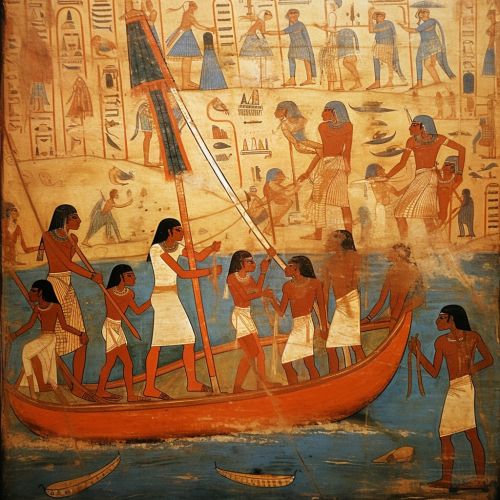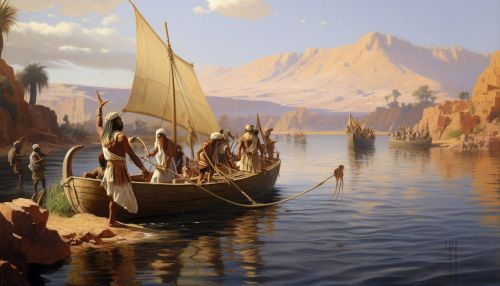Land of Punt
Introduction
The Ancient Egyptian civilization was known for its rich cultural and commercial exchanges with various regions across the world. One such region was the Land of Punt, often referred to in ancient Egyptian texts as "Ta netjer," meaning "God's Land." The Land of Punt was an important place for trade and cultural exchange in the ancient world, and its exact location has been a topic of debate among historians and archaeologists.


Historical References
The first known reference to the Land of Punt comes from the Palermo Stone, a stele from the Old Kingdom of Egypt, dating back to around 2500 BCE. The stone records a trading expedition to Punt during the reign of Pharaoh Sahure. Other references to Punt in ancient Egyptian texts describe it as a land rich in resources, including gold, aromatic resins, ebony, ivory, and exotic animals.
Location
The exact geographical location of the Land of Punt has been a subject of much debate among historians and archaeologists. Some theories suggest it was located in Africa, possibly in the region of modern-day Somalia or Ethiopia. Other theories propose that Punt was located on the Arabian Peninsula, possibly in modern-day Yemen. The debate continues, as there is no consensus among scholars.
Trade with Ancient Egypt
Trade between Ancient Egypt and the Land of Punt was significant. The Egyptians imported a variety of goods from Punt, including gold, ebony, ivory, aromatic resins, and exotic animals. In return, the Egyptians exported items such as bread, beer, wine, linen, and other manufactured goods. The trade with Punt was so important to the Egyptians that they often organized state-sponsored trading expeditions to the region.
Cultural Significance
The Land of Punt held a significant place in the cultural and religious beliefs of the ancient Egyptians. It was often referred to as "God's Land," and was associated with the gods and the afterlife. The Egyptians believed that the gods originated from Punt, and that it was a place of divine and supernatural significance.
Archaeological Evidence
Archaeological evidence of the trade between Ancient Egypt and the Land of Punt has been found in various sites in Egypt. These include the tombs of high-ranking officials, where artifacts made from materials imported from Punt, such as ivory and ebony, have been discovered. Additionally, ancient Egyptian texts and wall reliefs provide detailed accounts of trading expeditions to Punt.
Conclusion
The Land of Punt was an important region in the ancient world, known for its trade and cultural exchanges with Ancient Egypt. Despite the uncertainty surrounding its exact location, the Land of Punt continues to fascinate historians and archaeologists, offering a glimpse into the interconnectedness of ancient civilizations.
